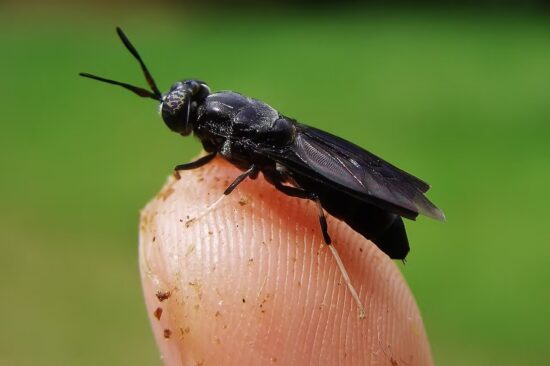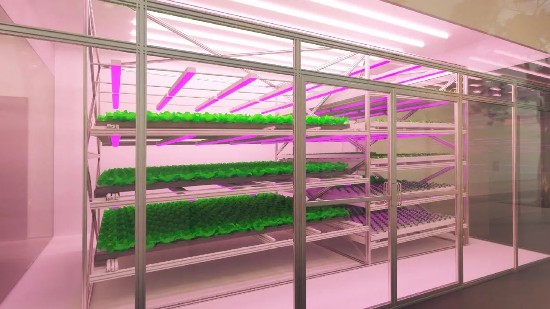As the nations of the world discuss how to deal with climate change here on Earth, there are some of us with plans to find homes elsewhere. Elon Musk, the founder of SpaceX, created his company to make humans an interplanetary species.
It is likely that within the next two decades, the first human explorers will land on Mars. For humans to survive on the Red Planet, however, it will require more than sending us. We don’t exist in isolation here on Earth and likely cannot survive on Mars without the accompaniment of many friends from our planet. Those friends include plants, bacteria and insects.
Simulating Mars
Researchers have simulated Martian soil, atmosphere and light conditions to see if Earth-based plants can survive there. But Martian gardens will not thrive without others to help. The plants will need living things that inhabit Earth’s subsurfaces as well as some that live above the ground.
Plants on Earth need pollinators. Plants on Mars will need the same. If not insects, then human settlers will need a suitable substitute.
NASA recognizes the challenge and along with the Canadian Space Agency has launched the Deep Space Food Challenge. Its focus is to come up with new food production technologies or systems for prolonged missions beyond Earth.
The environment of Mars is not Earth-plant-friendly. The atmosphere is extremely thin and mostly carbon dioxide (CO2). Since plants take in CO2, this would seem to be an advantage. But CO2 from ambient Martian air because it is so thin would be minimal.
The Martian surface lacks any protection from incoming solar and cosmic rays because the planet’s magnetosphere is almost non-existent.
Soil toxicity presents further challenges. Landers and rovers on Mars that have sampled the regolith indicate high concentrations of perchlorate compounds which are incompatible with most plant life.
Plants could indeed be grown in Earth-simulating greenhouses, but the infrastructure requirements to build and maintain them would add significantly to settlement costs.
Bacteria Could be a Game Changer
Could Martian soil be conditioned to be plant-friendly? Several species of DPRB bacteria found on Earth tolerate perchlorate. One, Dechloromonosand Azospirause, converts perchlorate into energy molecules and releases chloride and oxygen as waste.
The Chinese space program has experimented with growing plants in simulated lunar soil with some success. They introduced three bacteria, Bacillus mucilaginosus, Bacillus megaterium and Pseudomonas fluorescens. All are phosphorus-solubilizing and allowed the Chinese researchers to grow Benthi, a tobacco plant relative. Could similar results be produced on Mars? If we were to transplant these Earth-based bacteria to Mars, would they be changed and evolve when exposed to space and then the Red Planet?
Fertilizers and Pollinators
Another way for Martian soils to become Earth-plant-friendly is through the application of fertilizers. Fertilizers made using sodium molybdate, and molybdenum-bipyridine complex when combined with a hydrogen-activating catalyst made of palladium on carbon would turn perchlorate into water, a welcome outcome for both plants and human settlements.
And what about pollinators? On Earth, insects provide that essential service to help plants propagate. Could we bring bees to Mars to sustain our plants? Bees have been studied on the International Space Station. They don’t like living there. Mars could be equally hostile.
Could another insect friend be a good pollinator substitute, in fact, a friend with added benefits? A recent New York Times article by Sarah Scoles entitled “Mars Needs Insects,” describes introducing the Black Soldier Fly (seen below) to the Martian environment.
The fly could serve three purposes. It could be a pollinator. Its larvae could consume human waste produced by the settlers which would further condition the soil for growing plants.
And the fly could even be a food source. The Canadian government recently invested in a facility to grow Black Soldier Flies for sustainable agriculture use. The plan is to use the larvae as animal feed. It is protein-rich and tastes like nuts. If presented properly, Black Soldier Fly could be the next “beef” patty.

Humans in Deep Space Need Environmental Independence
NASA’s Biological and Physical Sciences Division has recommended a new program called BLiSS which stands for Bioregenerative Life Support Systems. The goal is to build sustainable environments independent of Earth. These would be capable of supplying all their food, water, and air needs. They would be circular environments with nothing going to waste.
The Black Soldier Fly right now sounds like the perfect companion to create such environments. It would pollinate the plants, consume human waste, fertilize the soil, and be a food source. They along with various bacteria will be the friends we need to make Mars a second home. Without them or similar friends coming along for the ride, our species will never become interplanetary.
















